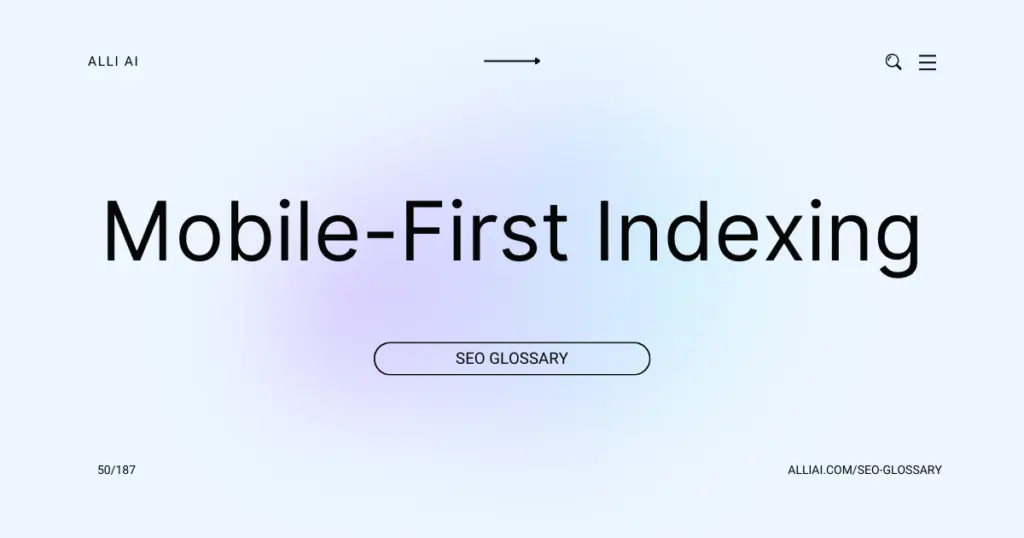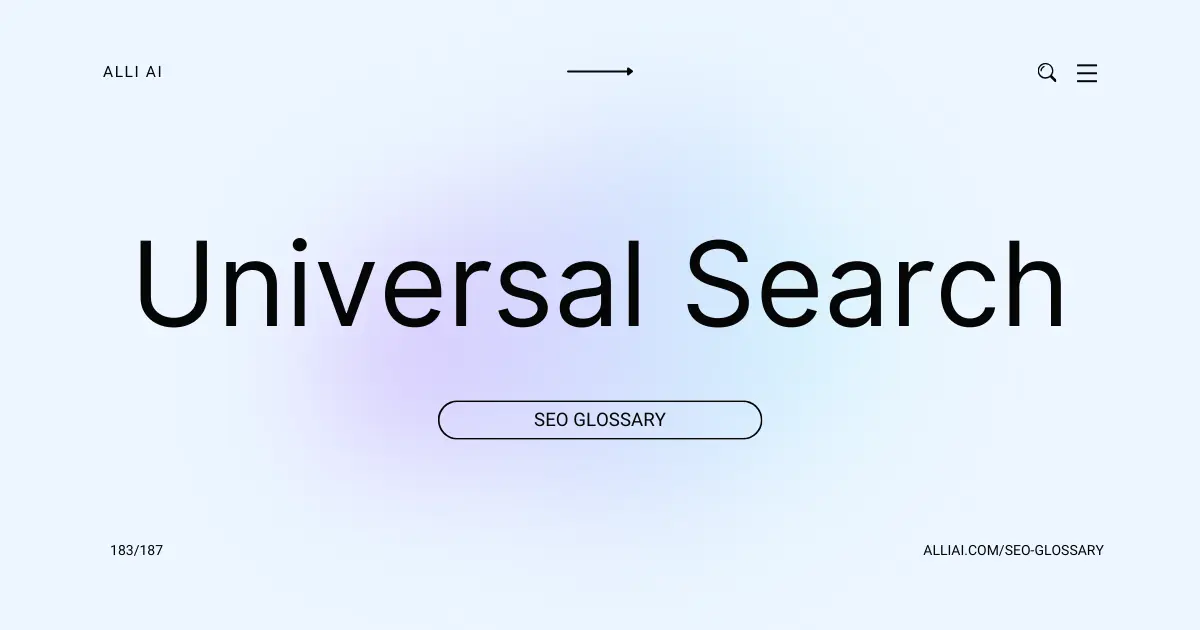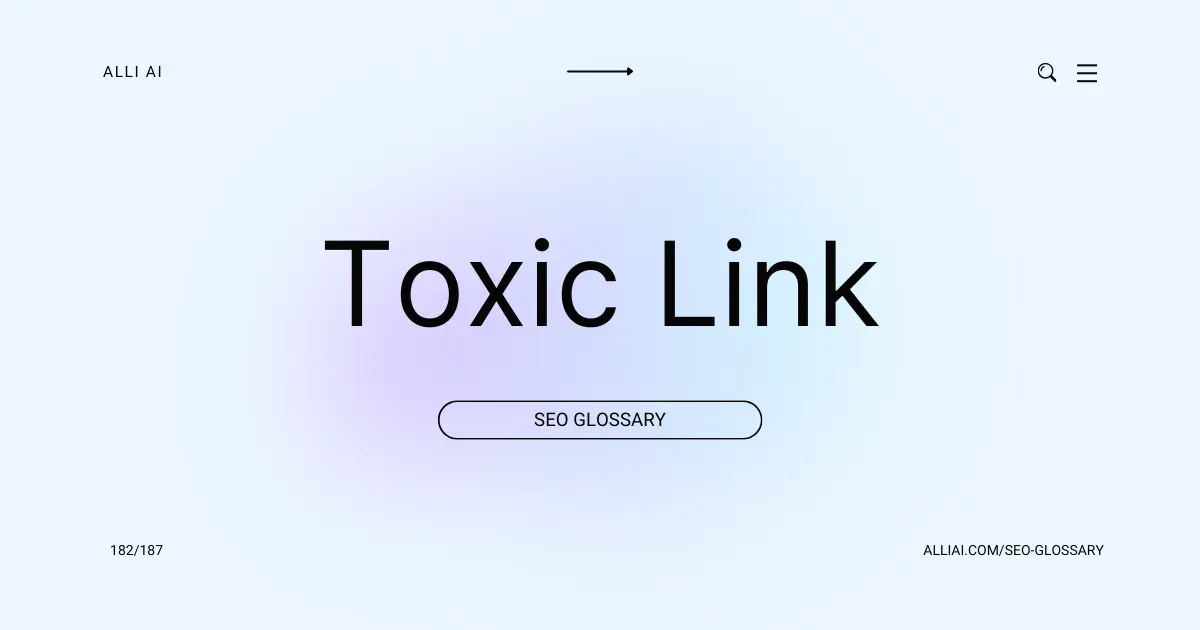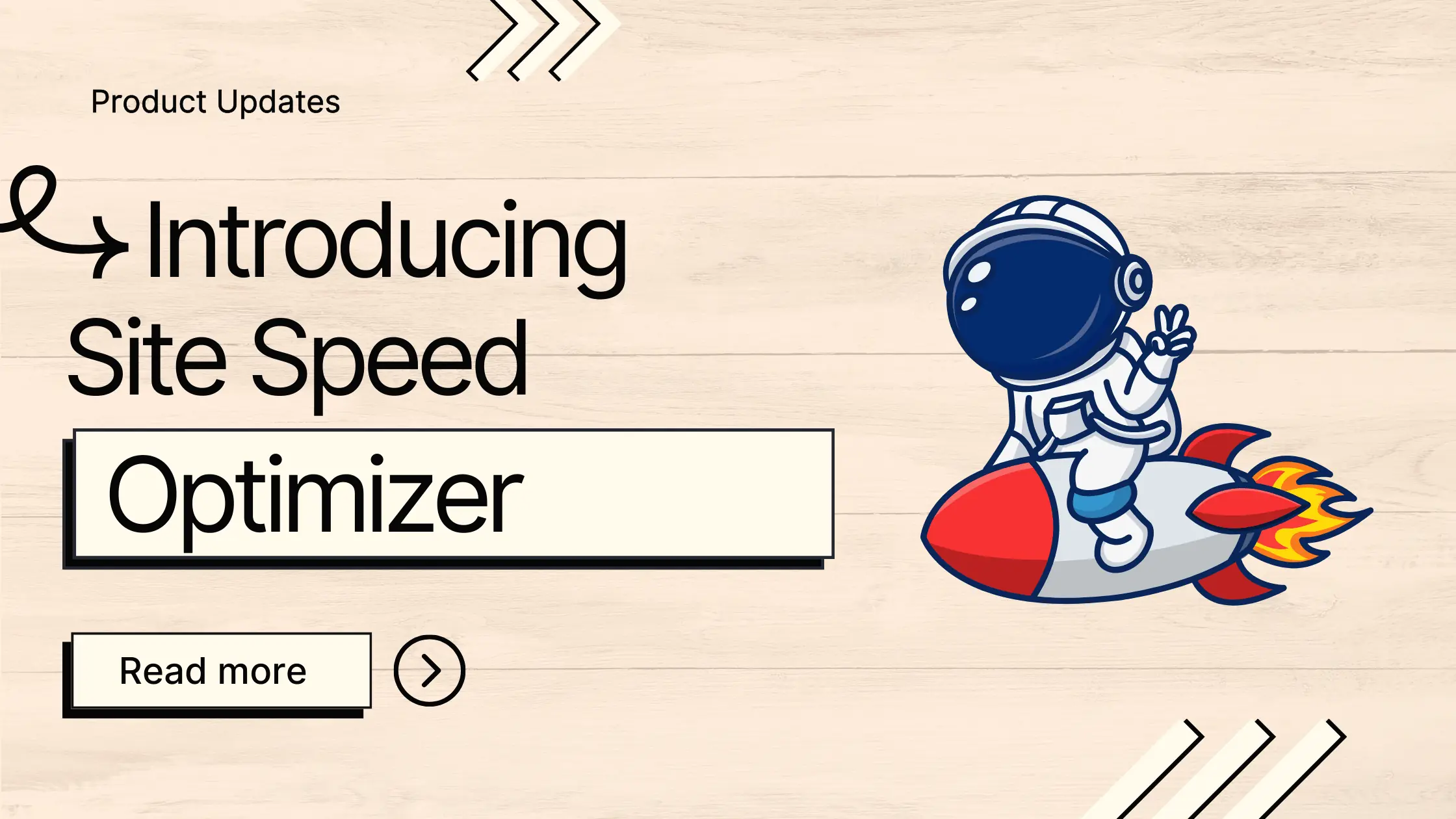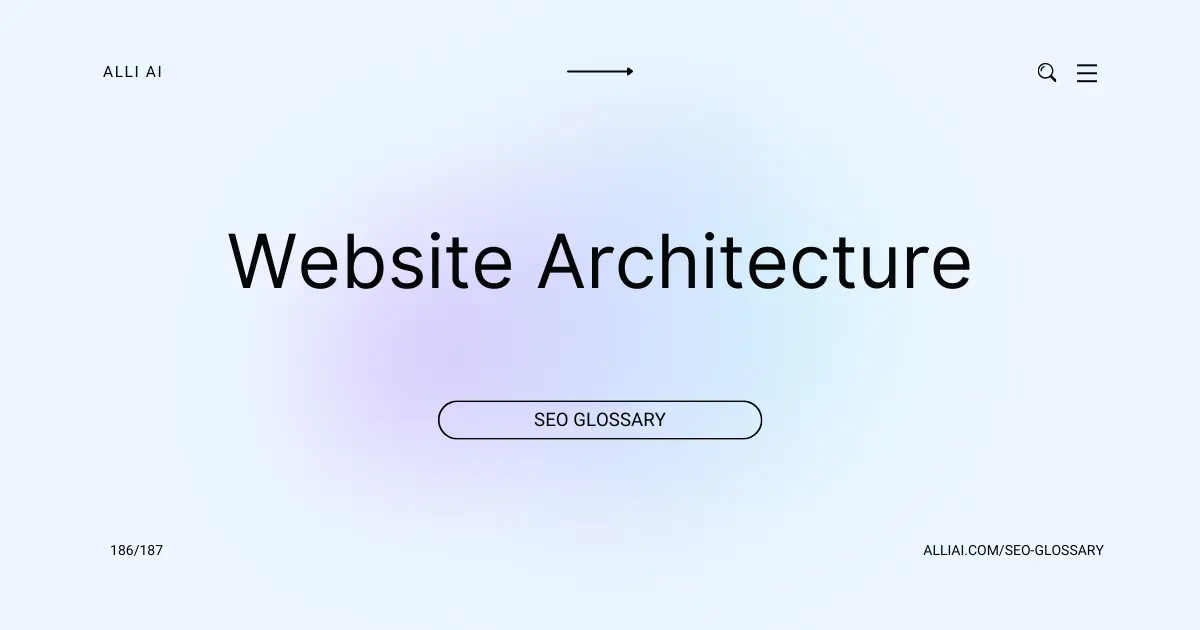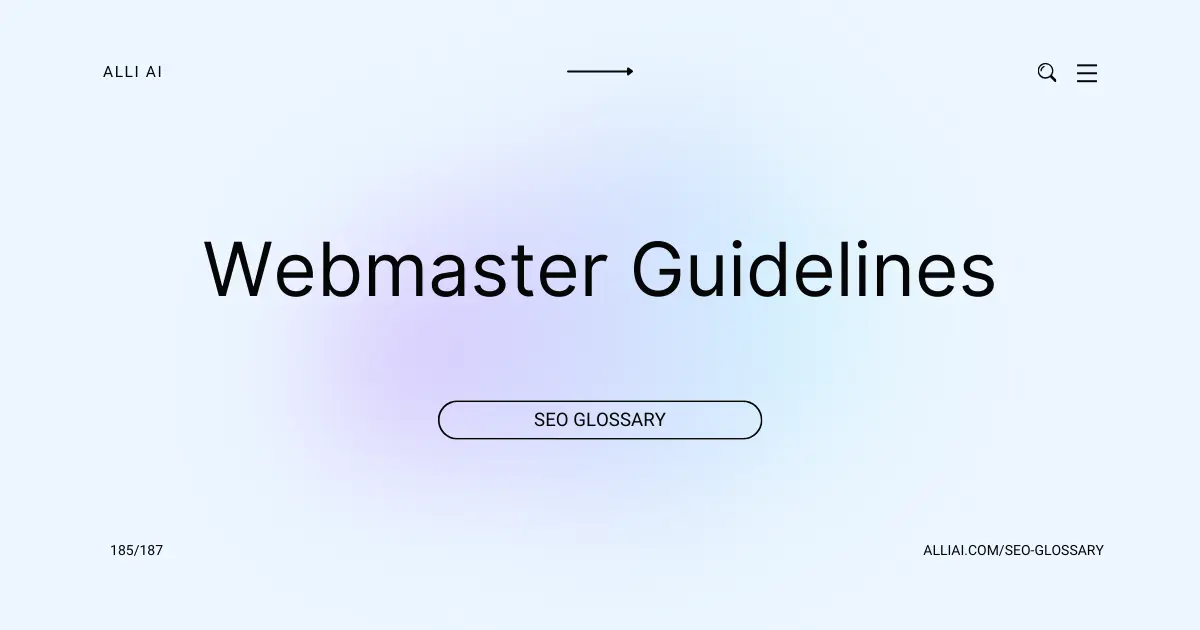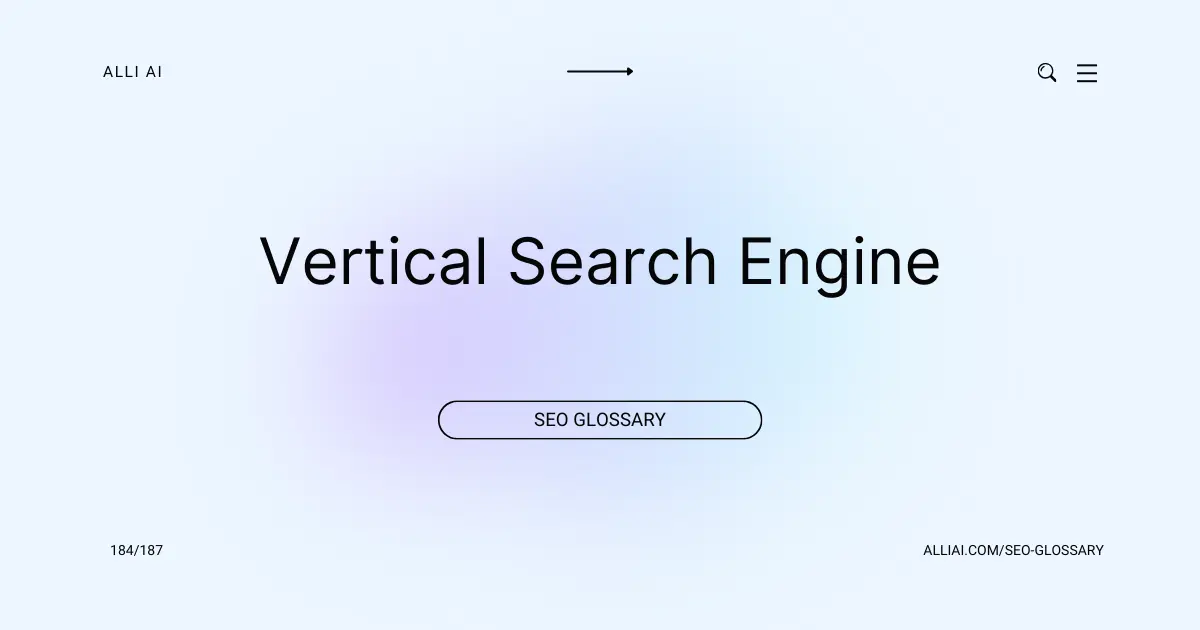What Does Mobile-First Indexing Mean?
Mobile-first indexing means that Google predominantly uses the mobile version of the content for indexing and ranking. Historically, the index primarily used the desktop version of a page’s content, which could cause issues for mobile searchers when that version varied greatly from the mobile version. Mobile-first indexing addresses this by prioritizing content and links from the mobile version of websites.
Where Does Mobile-First Indexing Fit Into The Broader SEO Landscape?
Mobile-first indexing means that Google predominantly uses the mobile version of the content for indexing and ranking. Historically, the index primarily used the desktop version of a page’s content, which could cause issues for mobile searchers when that version varied significantly from the mobile version. This shift is crucial in the SEO landscape as it reflects the growing predominance of mobile device usage for accessing the internet.
In practice, mobile-first indexing requires SEO professionals to ensure that the mobile version of their sites is fully functional and content-rich, mirroring the content on desktop versions to maintain SEO performance. It impacts technical SEO aspects such as website design (e.g., responsive or adaptive design), site structure, and speed optimization. Mobile usability becomes a major ranking factor, as poor mobile experiences can lead to lower rankings. Therefore, SEO strategies must prioritize mobile aspects, from ensuring mobile-friendly design and navigation to optimizing page speed and enhancing mobile user experiences through better UX/UI design.
Moreover, as mobile-first indexing emphasizes the importance of content parity between desktop and mobile versions, SEO professionals need to ensure that metadata (titles, descriptions, structured data), visual content, and social metadata are consistent across both versions. This alignment helps maintain a uniform signal to search engines about the content’s relevancy and quality, which is critical for maintaining or improving search engine rankings.
Real Life Analogies or Metaphors to Explain Mobile-First Indexing
1. Mobile-first indexing is like a GPS system prioritizing newer, more popular roads. Just as GPS would guide a driver to take the most used or fastest route, search engines prioritize mobile-friendly pages, as most internet users now browse on their devices.
2. Think of mobile-first indexing as a librarian organizing books based on current demand. Just as a librarian might move books that appeal to the majority of library visitors to the most accessible shelves, search engines adjust their indexing to focus primarily on mobile versions of content, considering the majority of users today browse on mobile devices.
3. Mobile-first indexing is akin to screening a movie in digital format before releasing the traditional film reel. Considering the evolution in how audiences consume media, prioritizing digital formats caters directly to the modern viewer’s preferences, similar to how search engines now prioritize mobile-friendly sites due to the prevalence of mobile browsing.
4. Consider mobile-first indexing as setting up a stage for a play where the audience primarily views through small binoculars. The stage (website) is set (designed and indexed) in such a way that those viewing through binoculars (smartphones) have the best experience, ensuring all elements are clearly visible and impactful.
5. Mobile-first indexing can be thought of as a restaurant tailoring its main menu to favor takeout orders. Given the rise in people preferring to order food to their homes rather than dining in, the restaurant optimizes its service and menu for takeout, similar to how search engines now cater primarily to mobile users.
How the Mobile-First Indexing Functions or is Implemented?
1. Crawling: Google uses mobile versions of web content to crawl the web. This step involves Googlebot (smartphone agent) accessing and downloading pages from mobile devices.
2. Rendering: After crawling, these pages undergo rendering, which simulates how a user would see the page on a mobile device. This ensures that Google indexes text, images, and other resources as they appear on mobile.
3. Indexing: Post-rendering, the content is indexed. This means storing and organizing the content found during crawling into Google’s database. Here, the mobile version is prioritized over the desktop version.
4. Ranking: Finally, during a search query, Google uses algorithms to rank the indexed content. The mobile-first index primarily influences this ranking, emphasizing mobile optimization in its ranking criteria.
Impact Mobile-First Indexing has on SEO
Mobile-First Indexing prioritizes the mobile version of a webpage for indexing and ranking in search engine results. This change directly impacts SEO performance and rankings, as websites optimized for mobile devices are likely to receive better visibility and higher rankings in search results. The user experience on mobile devices becomes crucial, with factors like mobile responsiveness, load times, and mobile interface design significantly affecting both SEO and user engagement. Websites not optimized for mobile may see a decline in rankings and traffic, as their visibility in search results could decrease. This shift emphasizes the necessity for mobile-friendly design elements, accessible navigation, and content parity between desktop and mobile versions to ensure consistency and maintain SEO efficacy.
SEO Best Practices For Mobile-First Indexing
1. Ensure that your website is responsive: Check that your website automatically adjusts to fit the screen size of any device, providing an optimal experience for both desktop and mobile viewers.
2. Optimize loading speed: Compress images, leverage browser caching, and minify CSS and JavaScript to enhance the loading speed on mobile devices.
3. Avoid using Flash: Use HTML5 instead of Flash, as it is not supported by most mobile devices.
4. Design for touch screens: Ensure buttons and navigational links are large enough to be clicked easily from a mobile device, and provide sufficient space between them to avoid mis-clicks.
5. Simplify menus: Use a hamburger menu or a simple drop-down to make site navigation on mobile devices straightforward and uncluttered.
6. Ensure text readability: Use a font size that is readable without zooming on a mobile device, and maintain contrast for readability in different lighting conditions.
7. Prioritize above-the-fold content: Place the most important information and calls-to-action above the fold since mobile users might not scroll down.
8. Mobile-friendly videos and images: Ensure that all multimedia content is optimized for mobile viewing, including using responsive image solutions (like srcset) and ensuring videos can be played on mobile devices.
9. Verify mobile-friendliness: Use Google’s Mobile-Friendly Test tool to identify any issues in rendering on mobile devices and address them accordingly.
10. Optimize for local search: If applicable, optimize your site for local search by incorporating location-based keywords and registering with Google My Business.
11. Check and optimize mobile site configuration: Whether your site uses responsive design, dynamic serving, or separate URLs for mobile versions, ensure it’s correctly set up and accessible to search engines.
12. Utilize structured data: Implement structured data to help Google crawl and index your content more effectively, which is crucial for mobile-first indexing.
13. Maintain parity between mobile and desktop content: Ensure that your mobile site contains the same content as your desktop site. This includes text, images, videos, and links.
14. Test and monitor performance: Regularly use tools like Google Search Console and PageSpeed Insights to monitor your site’s performance and address any issues related to mobile usability or speed.
15. Keep content accessible: Avoid mobile pop-ups and other intrusive interstitials that can hinder accessibility and potentially harm your site’s ranking.
Common Mistakes To Avoid
1. Non-Responsive Design: Websites that do not use responsive design often provide poor user experience on mobile devices. Ensure your site uses responsive design, allowing content to adapt seamlessly to different screen sizes.
2. Slow Mobile Page Speeds: Mobile pages that load slowly can negatively affect your ranking. Optimize images, leverage browser caching, and minimize code to accelerate page load times on mobile devices.
3. Blocked Files: Ensure that mobile versions of your site do not block CSS, JavaScript, or images. Such blocks can prevent Google’s mobile crawlers from indexing your site correctly.
4. Mobile-Only 404s: Some sites show content on desktop versions that isn’t accessible on mobile versions, leading to a 404 error. Make sure all desktop content is available and functional on mobile.
5. Intrusive Interstitials: Avoid pop-ups that cover the content immediately after a user navigates to your page or while they are looking through the page. Google might penalize sites that use these obtrusive interstitials.
6. Poor Mobile Content: Ensure the content on the mobile site matches the content on the desktop site. Any discrepancies can cause issues with Google’s mobile-first indexing.
7. Unplayable Content: Mobile browsers may not support certain formats like Flash. Use HTML5 instead to ensure compatibility and functionality across all devices.
8. Mobile-User Agent Disallow: If the robots.txt file for mobile user agents disallows crawling, Google won’t index your mobile site correctly. Validate and test your robots.txt to ensure it permits crawling.
9. Lazy Loading Issues: If not implemented correctly, lazy loading can prevent Googlebot from indexing images or content. Ensure you follow best practices for lazy loading and test it extensively.
10. Hreflang Misconfigurations: If your site uses hreflang for language or regional URLs, ensure your mobile URLs’ hreflang annotations accurately reflect those of the desktop site to prevent confusion for search engines.
11. Viewport Configuration Errors: Lack of proper viewport configuration can make your content look bad on mobile devices. Include the viewport meta tag in the head of your HTML to control layout on mobile browsers.
12. Unoptimized Fonts and Touch Elements: Small fonts and close touch elements can be frustrating on mobile. Use legible font sizes and adequately space touch elements to enhance mobile usability.
Regular auditing and testing across various devices ensure that your website is compatible and performs well under Google’s mobile-first indexing, minimizing the risk of ranking losses.
